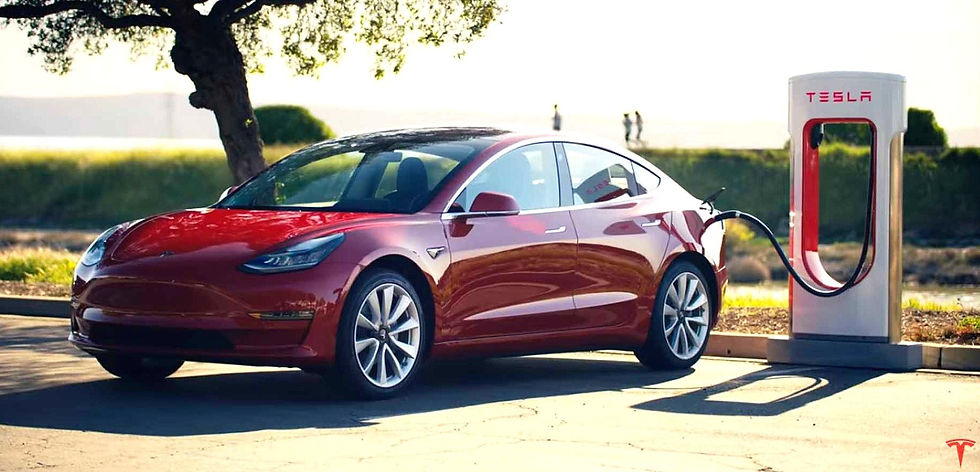Importance of Information Technology
- Bora Baykal

- 31 May 2021
- 3 dakikada okunur
Information technology has a long and illustrious history. Information technology has existed for as long as people have existed since there have always been means of communicating through technology accessible at the time. The history of information technology may be divided into four periods.
Premechanical
Mechanical
Electromechanical
Electronic
What we will investigate in this writing is the last era which is the Electronic Age.
Electronic Age and Data Processing
The Williams tube, based on a typical cathode ray tube] was the first random-access digital storage device, but the information contained in it and delay line memory was volatile in that it had to be refreshed on a regular basis, and so was lost once power was disconnected. The magnetic drum, created in 1932 and utilized in the Ferranti Mark 1, was the first kind of non-volatile computer storage.
Today’s many sophisticated devices use data transmission to contact each other and serve an interlinking function for their users.
Transmission, propagation, and reception are the three elements of data transmission. Broadcasting, in which information is sent unidirectionally downstream, or telecommunications, with bidirectional upstream and downstream channels, are two major categories.
Since the early 2000s, XML has become more widely used as a way of data interchange,] notably for machine-oriented interactions like those engaged in web-oriented protocols like SOAP, representing "data-in-transit rather than data-at-rest."
But basically how do these devices work?
For example, let’s look at one of the pioneer inventions: the computer.
The computer's fundamental function is performed in a section of the machine that humans can't see, the control center, which translates data input into information output. The central processing unit (CPU), a very complicated and vast piece of electrical circuitry that executes recorded program instructions, is the control center. A central processing unit is required for all computers,

The central processing unit's control unit manages and unifies the computer's activities. It chooses and retrieves instructions from the main memory in the correct order, then interprets them to activate the system's other functional parts at the right time
The primary memory, control unit, and arithmetic-logic unit make up the central processing unit (CPU), which is the most important portion of any digital computer system. It is the physical heart of the computer system, with different peripheral equipment, such as input/output devices and auxiliary storage units, connected to it.
In recent computers, the CPU is housed on a microprocessor, which is an integrated circuit chip.
Temporary Storage Areas (Registers)
Instructions or data are temporarily stored in registers. They aren't part of memory; rather, they are specific extra storage areas that provide a performance boost. The control unit directs the registers, which take, retain, and send instructions or data as well as execute high-speed arithmetic or logical comparisons.
The term memory refers to the part of your computer that allows you to access data for a brief period of time. DRAM, or dynamic random-access memory, is the name for this component. Many processes are carried out by your computer by accessing data stored in its short-term memory. The quantity of RAM installed on your computer affects your system's speed and performance.
Storage refers to the part of your computer that allows you to save and access data over time. Storage is usually in the form of a solid-state drive (SSD) or a hard disk (HDD). Storage houses your applications, operating system and files for an indefinite period. Computers must write and read data from storage systems, therefore the storage system's speed influences how quickly your system can boot up, load, and retrieve what you've saved.

Memory is distinguished from storage by the fact that memory is cleared when the machine is shut off. Storage, on the other hand, remains intact no matter how many times your computer is turned off. As a result, any files left on your desk when you leave the office will be thrown away in the desk and filing cabinet comparison. The contents of your file cabinet will not be lost.
Computers, as they are known across the world, are essential for communication and the hub of information technology. Household Internet use began in the early 1990s, spurring widespread adoption of email, websites, blogs, social networking, and video chat. Many old channels of communication, such as postal mail and landline phones, now appear to be outmoded.
Resources
https://www.ierek.com/news/index.php/2017/08/30/technology/
https://www.kingston.com/us/memory/difference-between-memory-storage#:~:text=Whereas%20memory%20refers%20to%20the,drive%20or%20a%20hard%20drive.
https://www.britannica.com/technology/central-processing-unit
https://www.britannica.com/technology/control-unit. . 


Yorumlar